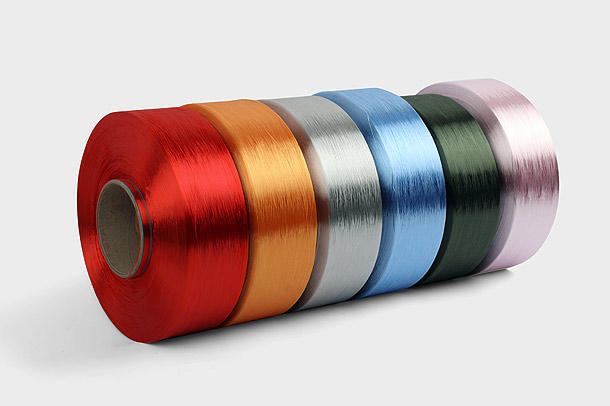Add: NYaqian Road No128 Yaqian Town Xiaoshan Hangzhou Zhe Jiang China.
Tel: 0086-0571-82602080
Fax: 0086-0571- 82758132
E-mail: [email protected]
In the vast world of synthetic textiles, polyester FDY yarns stand as a cornerstone material, renowned for their strength, smoothness, and versatility. Understanding the unique characteristics of this yarn is crucial for anyone involved in textile manufacturing, sourcing, or design. This guide delves deep into the essence of fully drawn yarn, exploring its production, advantages, and the myriad ways it shapes the fabrics we use every day. Whether you're comparing material options or seeking to understand the fundamentals, this article provides the detailed insights you need.

Polyester FDY is a type of continuous filament yarn where "FDY" stands for Fully Drawn Yarn. This name is key to understanding its nature. Unlike yarns that are drawn or textured in subsequent steps, FDY undergoes a complete drawing process during its initial spinning. This results in a yarn with its final molecular orientation and physical properties already set, making it ready for direct use in weaving or knitting without further drawing.
The "Fully Drawn" aspect refers to the critical manufacturing step where the yarn is stretched (drawn) to align the polymer chains. This alignment significantly enhances the yarn's tensile strength and reduces its potential for elongation. The fundamental properties of polyester fdy yarn are defined at this stage.
The unique production method of FDY grants it a set of superior characteristics that make it highly desirable. These advantages of FDY in textile manufacturing are evident in the quality and performance of the final product.
The mechanical properties are the measurable characteristics that define how the yarn behaves under stress and strain.
Beyond measurable properties, FDY offers practical benefits that streamline production and enhance fabric quality.
Understanding how polyester FDY yarn is produced is key to appreciating its quality. The process is a continuous, highly controlled sequence that transforms raw materials into finished yarn.
The journey begins with PET (Polyethylene Terephthalate) chips. These chips are melted and extruded through a spinneret to form filaments. The critical FDY process involves integrated spinning and drawing.
A clear understanding of the difference between polyester FDY and DTY or other yarns is essential for selecting the right material for a specific application.
The most common comparison is between FDY and DTY. While both start similarly, a key differentiator is the texturing process.
The table below provides a clear, side-by-side comparison:
| Characteristic | Polyester FDY | Polyester DTY |
| Surface Texture | Smooth and straight | Textured and bulky |
| Strength | Very High | High |
| Elongation | Low | Higher |
| Primary Use | Weaving, linings, shirting | Knitting, apparel, home textiles |
| Fabric Hand Feel | Smooth and slick | Soft and warm |
POY is not a finished product but an intermediate. It is partially drawn and has low orientation, making it unstable for direct use. POY is primarily used as the feedstock for producing DTY or can be further processed into FDY. The key difference between polyester FDY and DTY hinges on POY being the starting point for DTY.
The applications of fully drawn yarn are extensive, spanning from everyday clothing to high-performance industrial products. Its versatility is a testament to its superior properties.
In the fashion and home furnishing sectors, FDY is valued for its aesthetic and functional qualities.
Beyond fashion, FDY's strength and durability make it suitable for demanding technical uses.
The core difference lies in the fiber structure. Polyester FDY yarns are made from continuous filaments, resulting in a smooth, strong, and uniform yarn. Spun polyester yarn, on the other hand, is made by spinning short, staple fibers together. This gives spun yarn a softer, more natural feel (similar to cotton) but generally lower strength and a more textured surface compared to the sleekness of FDY.
Pure FDY yarn itself has very low elasticity due to its fully drawn nature. It is not used to create stretchable fabrics on its own. However, stretch in fabrics is typically achieved by blending FDY with elastic fibers like spandex (Lycra) during the weaving or knitting process. The FDY provides the base strength and structure, while the spandex provides the stretch.
Polyester FDY yarns are typically dyed using a method called High-Temperature High-Pressure (HTHP) dyeing, which is ideal for polyester. The quality of the dyeing process is crucial. Properly executed, it results in vibrant, colorfast fabrics. However, if not controlled correctly, issues like barre (streaky appearance), color unevenness, or reduction in fiber strength can occur. The inherent uniformity of FDY helps in achieving consistent dye uptake.
Like all conventional polyester, FDY is derived from petroleum, which poses sustainability challenges. However, the industry is evolving. Recycled Polyester FDY (rFDY), made from post-consumer PET bottles, is becoming increasingly available and offers a more sustainable alternative. The durability and longevity of fabrics made from FDY also contribute to sustainability by extending the product's life cycle. The key is to look for certifications like GRS (Global Recycled Standard) when sourcing.
Hot Products